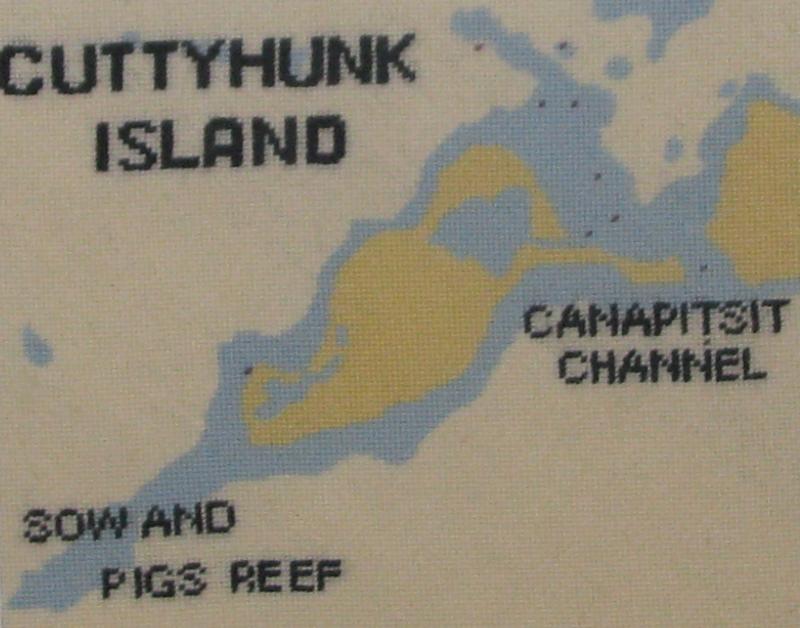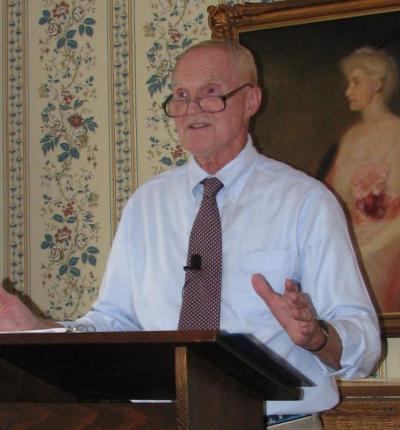300+ years of Cuttyhunk
Mattapoisett Town Historian Seth Mendell on Friday spoke to the Sippican Women's Club about the colorful history of Cuttyhunk Island, the outermost of the Elizabeth Islands in Buzzards Bay. Here are a few fun facts gleaned from his talk.All quotes are from Mendell.
-- The first Englishman to set foot on Cuttyhunk was Bartholemew Gosnold, in 1602. In addition to "discovering" Cuttyhunk, Gosnold gets credit for naming Cape Cod, "whether that's true or not" and for naming Martha's Vineyard in honor of his daughter Martha.
-- Shakespeare's description of the island in "The Tempest" is "the spitting image of Cuttyhunk." It is suspected that Shakespeare knew Gosnold, his captain, or the 3rd Earl of Southampton, who financed Gosnold's voyage to the New World.
-- Cuttyhunk belonged to the King of England until 1635, when "James I decided he didn't want to be bothered by all those islands over there" and sold them to the Massachusetts Bay Colony. The Colony didn't particularly want them either and quickly resold them to Thomas Mayhew. "All those islands" included Martha's Vineyard and Nantucket.
-- In 1693, the "Cuttyhunk chunk" was sold to Peleg Slocum of Westport, who used the island for sheep farming. All the islands were ideal for sheep because "you don't have to have any walls."
-- Among the relatively few famous people (heh, among the few people) born on Cuttyhunk, was Paul Cuffe. Son of a free African father and Wampanoag mother, he amassed a fortune in shipbuilding and the coastal trade, and was recently honored with a small park in New Bedford.
-- Sixty-eight years before the Coast Guard arrived on Cuttyhunk in 1915, the islanders established their own Cuttyhunk Humane Society to aid "the poor devils who ran their ships up on the rocks."
-- Much of the "Cuttyhunk that we know today" is a product of the "arrival of the New York millionaires" in the 1870s. They established a fishing club, whose building still stands, and employed locals to build gangways and platforms so that they could fish for striped bass in style off the island's many boulders. Old photographs show men in "three-piece suits and ties and straw hats" casting their lines. Another employment for the locals was helping the millionaires by chumming, throwing bait into the water to attract the bass. The chum of choice: lobsters.
-- The two grand houses on the island and a paved road to a third that was never built are the work of William Wood, a textile magnate who began his career at age 12 sweeping floors at the Wamsutta Mills in New Bedford. He also provided the island with a power plant, putting all the utility lines underground, and had the first "Alert" (the island ferry for generations) built.
-- The "yachting industry" on Cuttyhunk benefited from President Franklin Delano Roosevelt's stimulus package as New Deal dollars dredged the island's pond. Now a popular sailing destination, it would previously accommodate only skiffs and catboats.
-- Cuttyhunk was the site of the wreck of the Wanderer, the last whaling ship to be built in Mattapoisett and the last whaler to sail from New Bedford. "There are pieces of the Wanderer everywhere. Everyone seems to have a chunk."
-- Cuttyhunk's population today: About 64 in the winter, maybe 1,000 in the summer.













